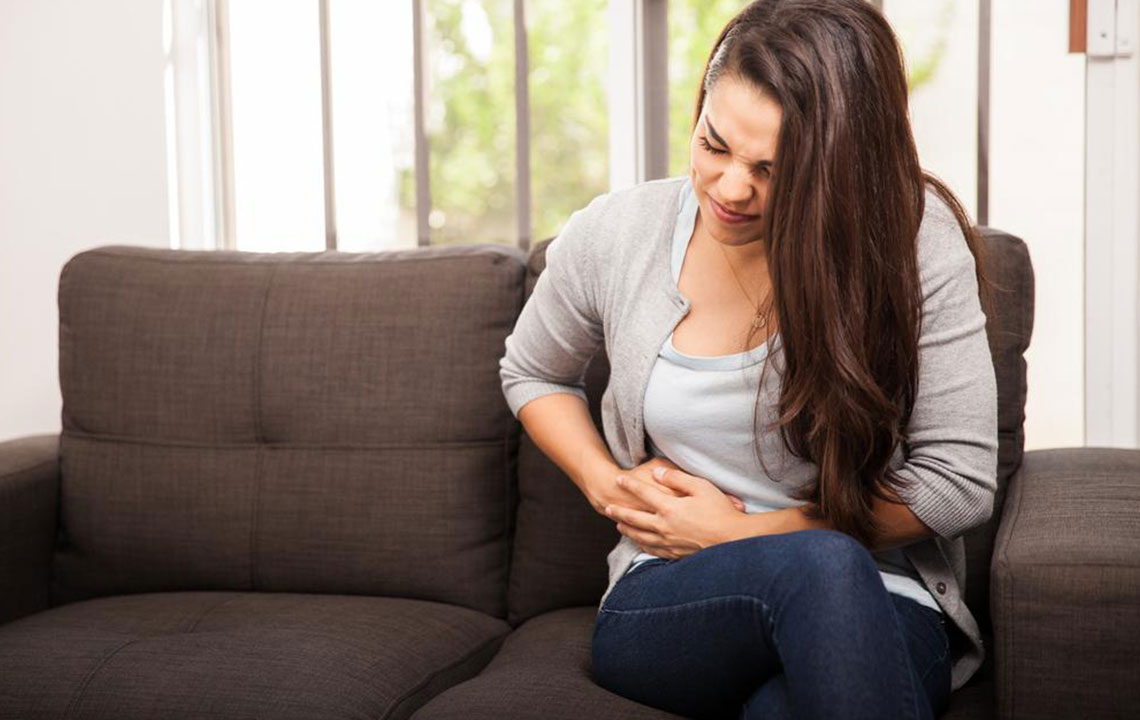All You Need to Know about Diverticulitis

When pouches in the large intestine become swollen, the condition is known as diverticulitis or colonic diverticulitis.
These pouches (diverticula) are like bulging sacs or small blisters. When these appear in the large intestine or the colon and are in their dormant state, the condition is called as diverticulosis. Sometimes, one or more of these pouches are rendered infected; this condition leads to diverticulitis.
The condition appears mostly after the age of 40 years and has a higher probability of occurring at the end of the descending and sigmoid colons. They can develop anywhere in the digestive tract.
Symptoms
Diverticulitis could occur as an acute complaint with a severe attack of infection and inflammation or as a chronic illness. In its chronic form, the infection and swelling may never heal up completely and lead to the following issues.
- Bowel obstruction
- Constipation
- Thin stools
- Abdominal swelling/bloating
- Pain experienced in the left part of the lower abdomen
- Feeling queasy and vomiting
- Loss of appetite
- Rectal bleeding (bright red)
Causes
Doctors have not been able to unearth the root causes(s) of why diverticula appear in the intestinal tract, yet a few risk factors are known to be contributors to the ailment.
- Low-fiber diet
Food intake with low fiber content or eating excess processed food leads to hard bowel movements. These increase the risk of scratching of the blisters and tears along the lining of the intestines. - Constipation
During a constipated bowel movement, the body has to put more strain to expunge the bowel contents. Continuing strain can lead to the formation of diverticula in the colon, which are bound to get infected by bacteria or stool contents. - Obesity
Studies have shown that a high body mass index and a bigger abdomen/waist circumference might put you at a high probability of developing diverticulitis. - Age
With growing age, the entrails get weakened. Even a slight pressure to push the stool forward may cause pouches to form in weak spots along the colon.
Diverticulitis Treatment Guidelines
Taking your symptoms and their severity into consideration, your healthcare provider might suggest treating yourself at home or get medical care in a hospital. Here are a few guidelines to follow for diverticulitis treatment.
Diverticulitis Treatment Guidelines For Home
- Bed Rest
It is advised to rest your body and cut down on all physical strain from the bowels. You need to take rest for 3-4 days along with other diverticulitis treatment guidelines for an effective turnaround in your symptoms. - Liquid Diet
Solid foods become hard to digest in the large intestine and can worsen the symptoms. A liquid diet is prescribed to avoid any strain from your bowels giving them a rest and let the diverticula to heal. This diet may include thin soups or chicken broths that move lightly through the digestive tract. - Low-Fiber Diet
Although a high-fiber diet helps in prevention of inflammation, still it is recommended to stick to a low-fiber diet following 1 or 2 days of a liquid diet. High fiber diets contain seeds and other hard-skinned contents that come from nuts or fruit seeds that can get stuck in the diverticula. Moreover, a high-fiber diet could put more strain on your bowel movement due to the increased bulk of your stools. - Medication
A course of prescribed antibiotics such as ciprofloxacin (Cipro) or metronidazole (Flagyl) with over-the-counter painkillers such as paracetamol can be taken to help fasten the process of healing. The idea is to not strain your large intestines and let the flare-up subside.
Diverticulitis Treatment Guidelines For Hospitals
In the event that your symptoms do not get better after home treatment, you might require medical attention. As the symptoms are generic in nature, the doctor will suggest that you get the routine tests done:
- Complete blood count to see if you have an infection or low red blood cells, possibly because of bleeding.
- Urinalysis to see if you have a urinary tract infection.
- Abdominal X-Ray to rule out other causes of abdominal pain.
- Stool test to look for blood in your stool.
Once other causes are ruled out, tests such as computed tomography scan or a sigmoidoscopy and colonoscopy are done to ensure a confirmed diagnosis.Taking your test results into consideration, your doctor might recommend you to stay in the hospital and receive treatment. As part of the diverticulitis treatment guidelines, you will receive intravenous antibiotics. In case there is an abscess, a small procedure will be done where the abscess will be drained out using a needle.
Recurring diverticulitis makes the condition chronic, and your infections become prone to gaining resistance to antibiotics. In such a scenario, the doctor would suggest a surgery to remove the infected part of your intestine. Surgery may include an open or laparoscopic colectomy where the affected part of the colon is removed. However, in case of an emergency surgery, the doctor will add a “stoma” bag that will be used to remove waste till the afflicted part can heal and be re-attached.
Leading a life free of diverticulitis is based on your treatment plan and lifestyle changes, which will ensure no recurrence of this condition as long as you follow the guidelines provided by your doctor.


